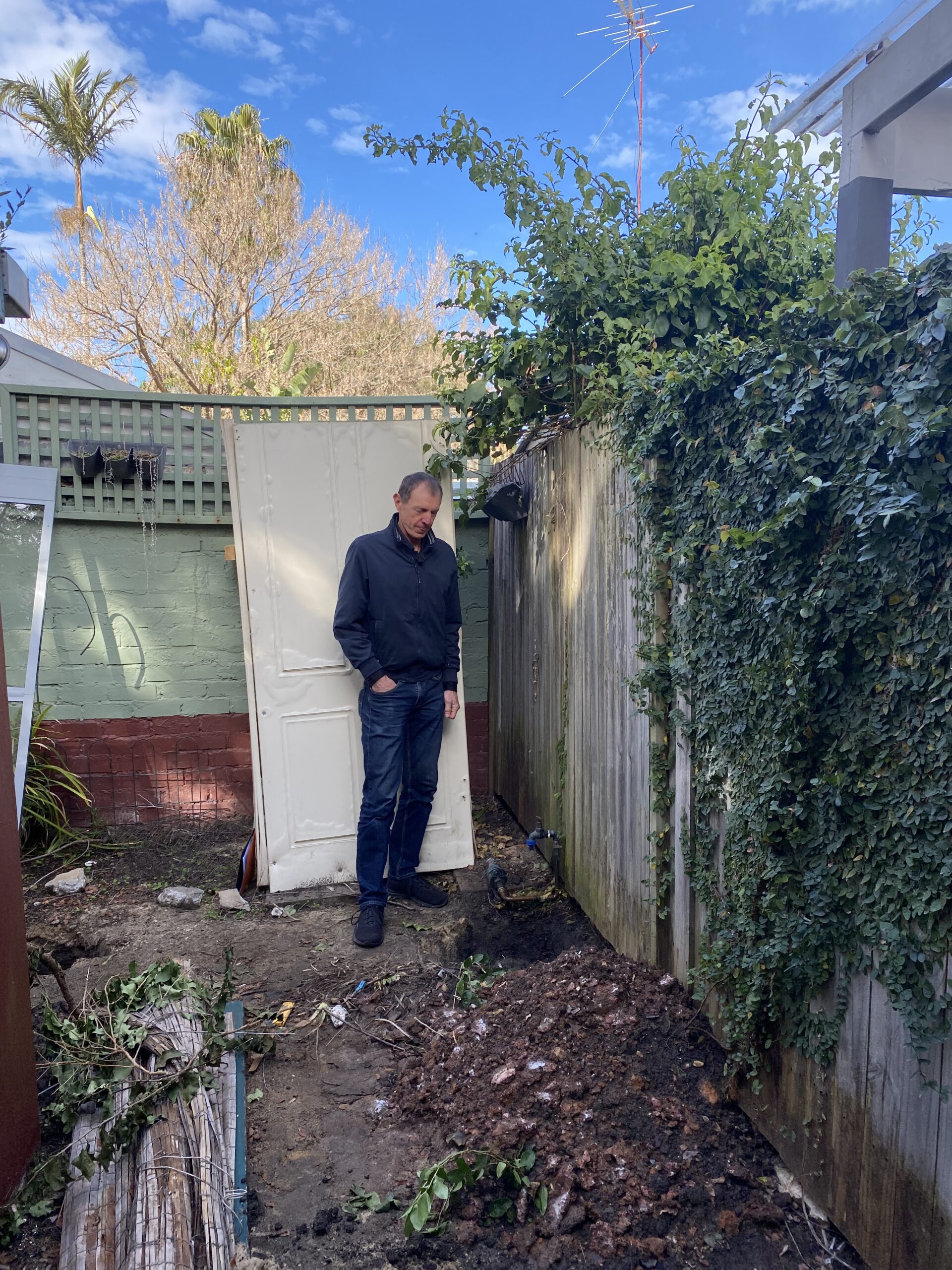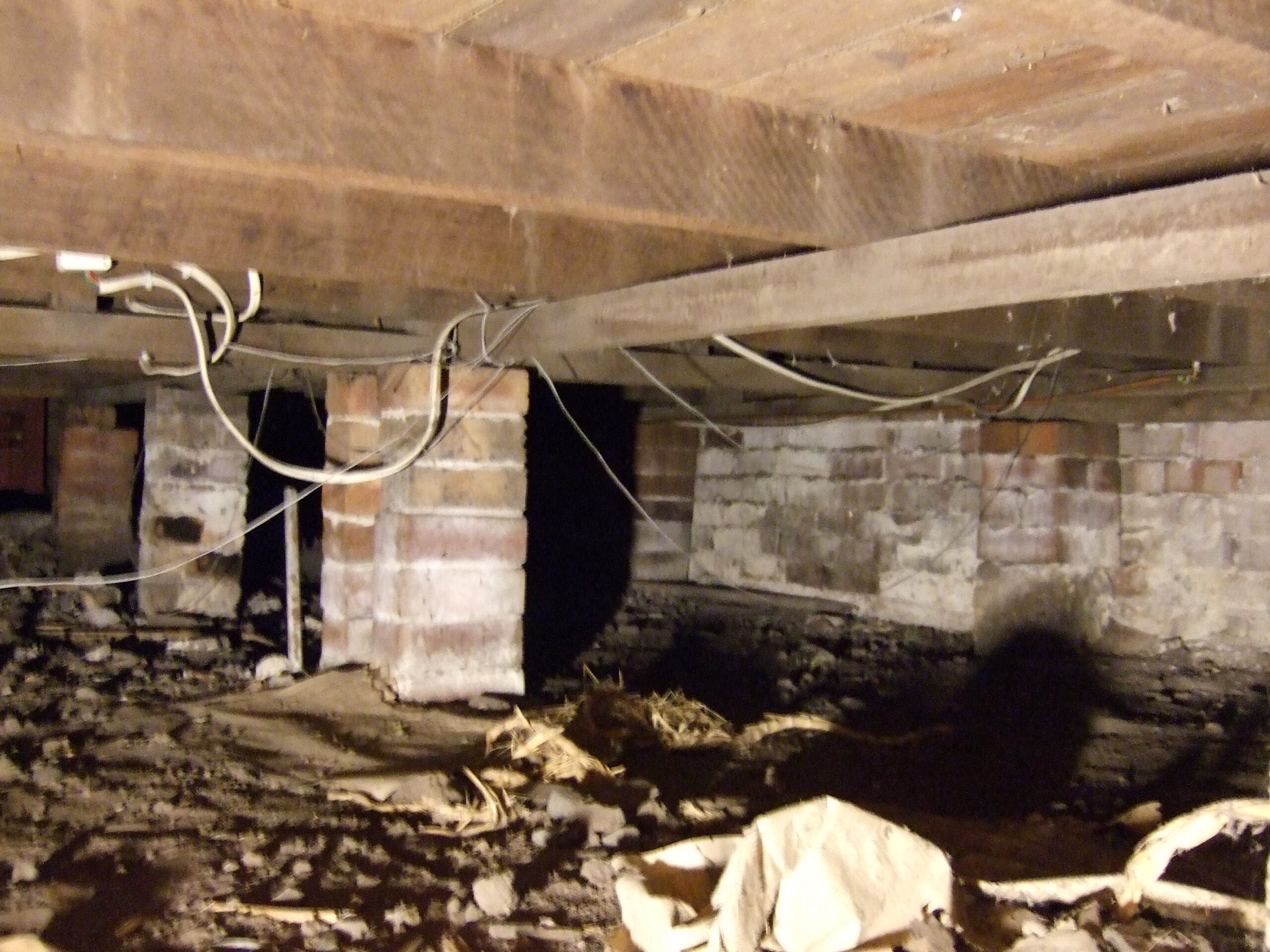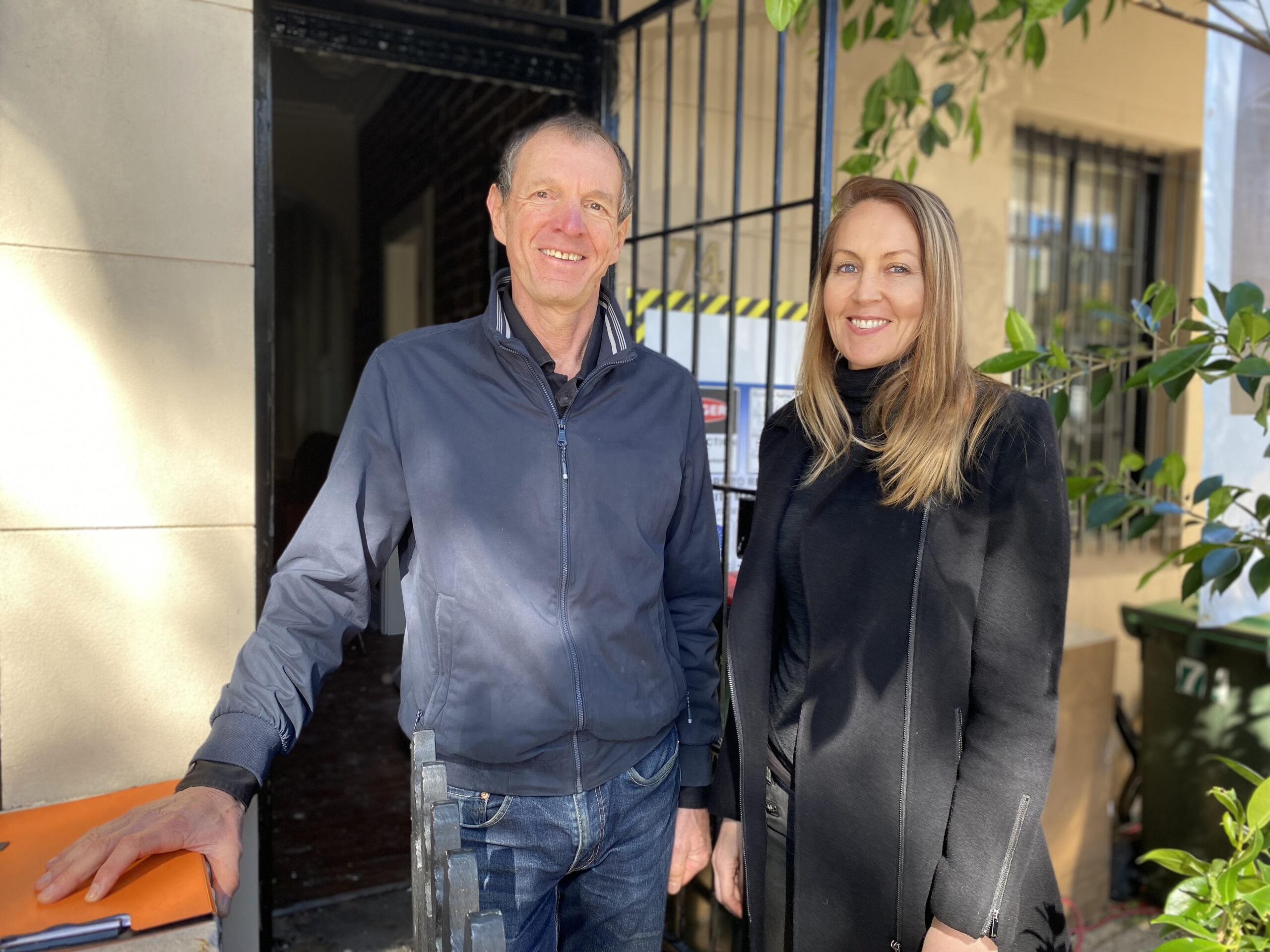
Can I achieve my off-grid water system objectives for my off-grid home?
I want the ImPossible House to be 100% unconnected to the water mains. So completely off-grid! I want to demonstrate it can be done in a built-up, established area, on a tiny block. Am I dreaming? Let’s ask John Caley.
Firstly who is John Caley, and why do I care what he thinks? John Caley was recommended to me by Caroline Pidcock (if you don’t know who she is, then see below). He is an engineer who has designed and is living with a small space solution which is almost the exact solution I’m looking for. Additionally, John has a business, Ecological Design, which offers assessment, advice and design services for sustainable residential renovations and builds. He advises on rainwater harvesting, thermal performance, energy audits – all the good stuff.
Who is Caroline Pidcock?
Caroline Pidcock is an Australian architect and a prominent advocate for sustainable development, based in Sydney, New South Wales, and she has provided me with guidance on the Impossible House throughout the project. She is an ambassador for the Al Gore Climate Change, and 1 Million Women initiatives – which is a movement of women and girls fighting climate change by taking practical action. She has also held presidential roles with the New South Wales and National Councils of the Royal Australian Institute of Architects. She had an appointment as a Life Fellow of the Royal Australian Institute of Architects in 2006, and she was awarded the prestigious Marion Mahony Griffin Award by the Australian Institute of Architects in recognition of her contribution to architecture in New South Wales. So, I trust her advice and recommendations as we speak the same ‘sustainablilty’ language.
I started talking to John about my off-grid water challenges around March 2023. I’d already been through a few water experts by that stage (I even extended the search globally!). Not sure why I didn’t contact John sooner – he lives literally two streets away from The ImPossible House. But better late than never.
John’s already done a layout for my builder to look at and has finished on a detailed design that my plumber will eventually install.
What does John think about my vision?
My brief to John was basically to fulfil the 5 requirements on my Water Page (also see the box below). Now – if it was up to him, I would still be connected to the water mains for reasons that will become clear. But to his credit, he’s respecting my vision.
My off-grid Water System Objectives
What are my water recycling requirements:
- Recycle all water so that it may be reused for drinking, the garden or the washing machine.
- Support a 3-person household.
- No water to leave the property (i.e. disconnected from the mains and stormwater).
- The cost of the solution is to be less than $30,000 (excluding your fee).
- The system must satisfy NSW health regulations.
Check out my water solutions page for the information I’ll be sharing once a solution is signed off and agreed upon.
This is what he specifically thinks about those requirements:
1. and 2. Recycle all water so that it may be reused for drinking, the garden or the washing machine, and support a 3-person household.
John says if I collect rainwater off the roof, there’s enough falling on the roof to be able to supply 97% of the water I’ll need for a three-person household, provided I have big enough storage tanks. (If my tanks are too small, it won’t work because if I empty them one day, and if I don’t get any rain the next, I won’t have any water.)
If I also do a greywater treatment system and use greywater for the washing machine and garden, he thinks I’ll be laughing.
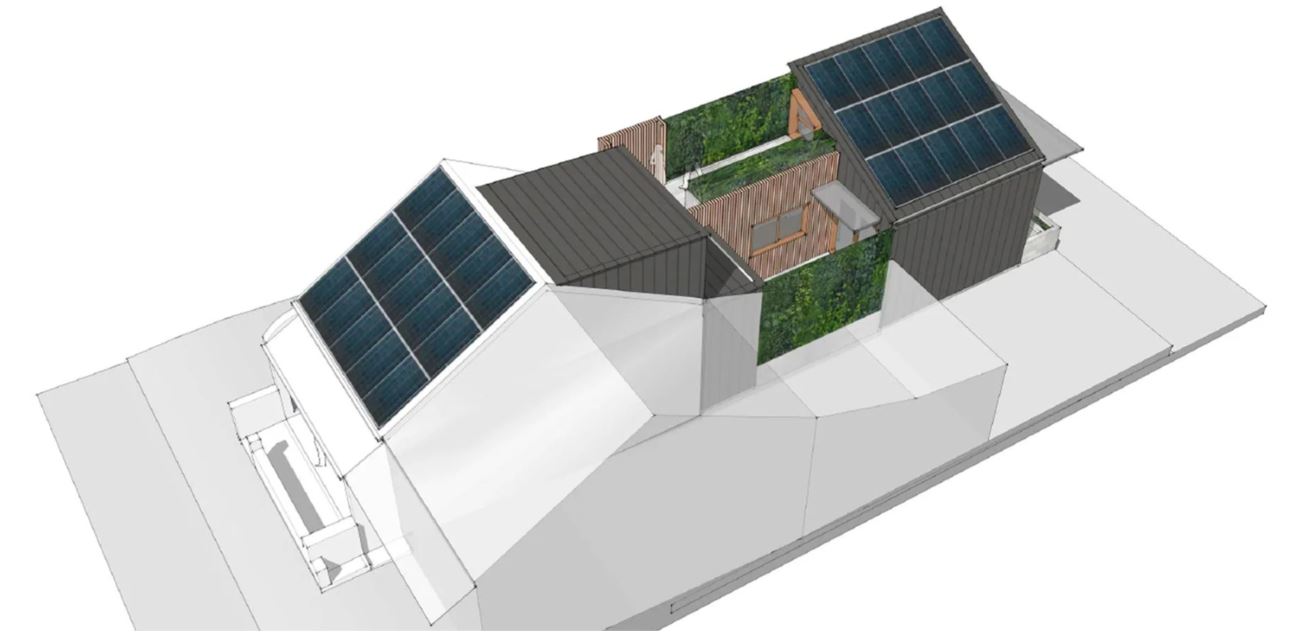

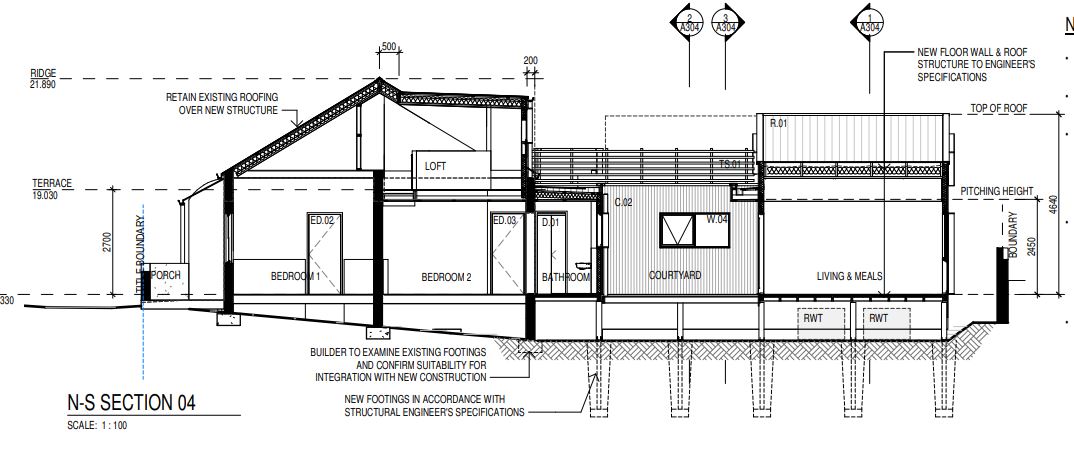

First two images show the top down view and rear view of the house. The second two images show the cross section and top down view of the house with Rainwater Tanks (RWT).
3. No water to leave the property (i.e. disconnected from the mains and stormwater).
John doesn’t think I can do it.
In Sydney we can get 300mm of rain in one day. In weather like that, the runoff from the roof is going to be so big, it will fill up the tanks, and then there’s just no physical way I could keep all the rest of it onsite.
If I had a really big site with sandy, absorbent soil, then he says I could arguably just dispose of that rainwater to subsoil infiltration. But I don’t have the square meterage in my yard for starters, and the ground in my area is very, very non absorptive – it’s clay basically.
And with such a small plot of land, and the house covering almost all of it, we can’t set up any kind of absorption system because those kinds of systems need to be 1.5m at least from the boundary – which is halfway into my house!
John and I inspecting holes in the backyard for clay.
4. The cost of the off-grid water solution is to be less than $30,000 (excluding John’s fee).
John thinks a rainwater harvesting system could be done for under $10,000. A greywater treatment system is typically about $15,000. There will be some additional costs, but he thinks we’re in the ballpark. Yes!!
5. The system must satisfy NSW health regulations.
NSW Health doesn’t regulate rainwater reuse; they just have guidelines.
Sydney Water says if you’ve got reticulated mains available in the street, you should connect to that – but it’s not a regulation, it’s “advice”.
There is a regulation for greywater treatment that requires you to use an accredited greywater treatment system. There are a few domestic models to choose from, John says. And all of them – bar one – use much more energy per litre compared to getting your water from a desalination plant. It doesn’t make sense from a sustainability point of view, John says.
But the reed-bed based system that is low energy is too big for my house. John’s still working this out.
Speaking of greywater, the way it will work in the house is, whenever I have a shower or do the dishes, the greywater goes into a sump tank, it gets processed in another tank and then goes into a storage tank. And that’s what I’ll use to water the garden or run the washing machine.
So where will my treated greywater go, if I’m not connected to the sewer, and it rains a lot? When my greywater storage tank fills up, I won’t need it to irrigate the garden because the garden’s already soaked. And if I did, it would just overflow out of the garden bed onto the street anyway. I can’t just pump it out into the gutter. (To be continued.)

To connect, or not to connect
That’s the question. Can I run my off-grid water system without connecting to the mains?
John’s own house runs on rainwater – he believes people should use as much rainwater as they can. But he’s still connected to the mains. At his house, when they have a couple of months where it doesn’t rain at all and their tanks run out, he’s set it up so the system automatically switches to the mains. That hardly ever happens, so only a small percentage of John’s household water comes from mains.
The two images above show the subfloor under John’s kitchen and lounge room with and without the full 6m long 3,000 litre underfloor bladder tank
It’s based on the idea that humans work best in a community, sharing things like water supply and water treatment, with everyone paying a small amount to have water there when you need it. If you end up needing to use a little bit of mains water or discharge a little bit of treated wastewater, then he thinks it’s good to just be connected and have that backup. It’s there in the street anyway.
My perspective on government infrastructure is a little different which you can read about here in my blog about sewage. I also want to see if I can actually go off grid for water… it’s the challenge!
Something else to ponder.
Back to my off-grid water solution, specifically my tanks
The only way I’m going to be able to fit rainwater tanks at my place is to have flat ones under the floor, probably made of plastic. Inside the house, my subfloors will definitely need to have access hatches installed directly above the holes at the top of each tank so they can be cleaned or repaired in future.
It’s pretty rare, but tanks do have leaks sometimes and usually they get replaced. As far as getting access to the tanks to pull them out and replace them in future, I have the old dunny lane at the side of the house, so John believes we can put access hatches in the side of that subfloor.
And finally: the Jacaranda challenge
Jacarandas are beautiful trees. There’s a big one growing in a neighbour’s backyard and at certain times of the year, it drops a lot of leaves and flowers onto my lot. Those leaves and flowers carry nutrients that will get into the water on my roof. There could be enough of those nutrients to affect the taste of my water; even send it anaerobic.
There are a few ways to deal with that, according to John. Some people just flush it out into the gutter, depending on how much water is in the tank. It’s hard to know how often this anaerobic thing will happen but it will need to be dealt with ongoing. In my case, the water is going to be used continuously by me, and that turnover helps.
(Maybe I will encourage my neighbour to keep the tree trimmed too.)
So in the end, I think the score is Water 3 : Laura 2.
I’ll keep you posted.
Keep an eye on my off-grid home’s water systems page for the information I’ll share once a solution is signed off and agreed upon.


